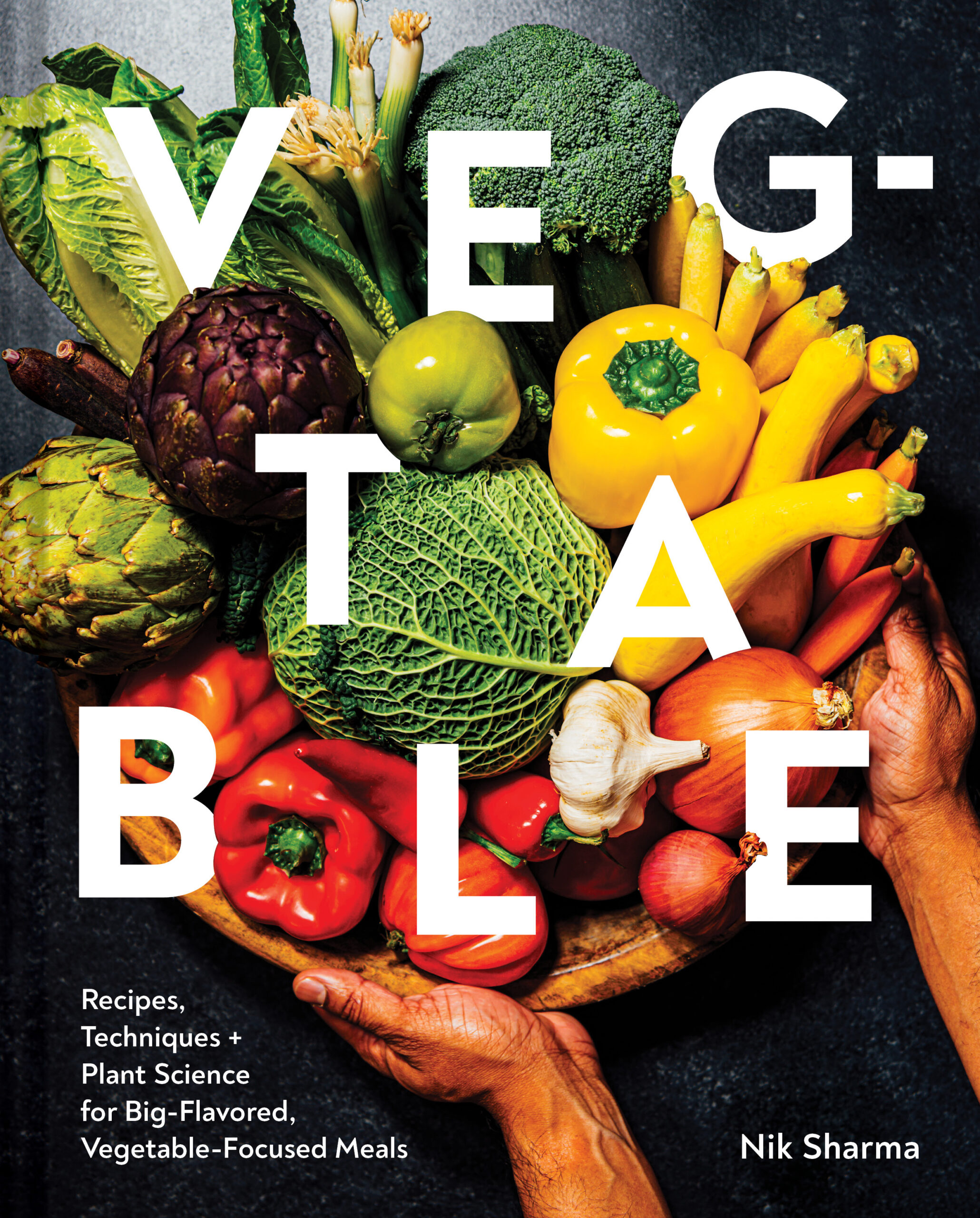Hello Folks,
I’ve got lots of new to share with you this week.
- L.A. folks and people visiting this weekend, I will have cookies at Now Serving L.A.’s bake sale this Saturday (3/12) from 11am to 2pm (or until they sell out) to help raise money for the people affected by the war in Ukraine. More details at Now Serving L.A. All proceeds will go to UNICEF UK’s Ukraine Appeal for children and families
- Thank you, Evan Kleiman (the host of KCRW’s Good Food), for the shoutout to my yogurt marinade science (on Serious Eats) on PressPlay with Madeleine Brand (also on KCRW).
- Catch me on my dear friend Liren Baker’s popular podcast Kitchen Confidante; we talk about cooking and science (P.S. If you aren’t a subscriber already, you should be now!)
- THE KITCHEN CABINETRY IS HERE!

When they put the new floors down in the kitchen, I said to myself, “Oh yeah! It feels like the kitchen is coming together.” When the cabinetry arrived this week, I said aloud, “It REALLY feels like the kitchen is coming together!” Everything looks like a big puzzle that needs to be put together, kinda like an episode from The Crystal Maze.
Puddings are wonderfully easy to make and unfussy, a big reason why I deviate to them as a choice when I need something sweet. This pudding is made with finely ground yellow cornmeal and tossed with fresh slices of rhubarb and sweet juicy blueberries (and you can use fresh or frozen!). The most important part is that it’s made with fragrant coconut milk, and it thickens and firms up due to the starch present in the cornmeal, which means there’s no need for eggs! This dish can be veganized (skip the butter to grease the pan and use coconut oil); it’s dairy-free and gluten-free. This pudding might remind you of Jamaican cornmeal pudding that’s made with coconut milk and flavored with rum and raisins; they both use the same idea – thickening using starch.
Do people still say “blubarb”?
How Does Starch Thicken this Pudding?
If you stir cornstarch in a cup of cold or tap water, nothing happens. The cornstarch won’t dissolve and will sink to the bottom. Now slowly heat the same mixture and keep stirring. As the liquid warms up, the starch solution loses its turbidity, becomes translucent, and thickens. If you leave the condensed liquid to cool, the thick liquid will form a gel. Starch won’t help thicken fats or oils because they don’t like each other (it won’t easily dissolve in it).
Starch is present in granules containing two types of sugar polymers, aka chains – amylose and amylopectin; the ratios vary by the plant source. For example, corn contains 28% amylose while starch from potatoes contains 23%, and millet contains only 1 %. This is one of the reasons why starches from different plants don’t behave the same and can’t always be used interchangeably.
When starch is added to cold water, the granules swell as the starch hydrates. As the mixture warms up, the granules continue to absorb more water and swell, and some of that amylose slips out from the granules into the water, and the thickness of the liquid keeps increasing. As the mixture continues to heat and the temperature rises, the starch granules eventually absorb so much water that they burst like overfilled water balloons. The amylose that’s slipped out of the granules forms a mesh-like gel network that holds the water, leading to thickening. This process is called gelatinization or thickening of starch (I’ll refer to it as “thickening”). If we keep heating the liquid to higher temperatures to the boiling point of water (212F/100C), that gel will eventually break, and the liquid won’t be as thick anymore.
Once the starch-water mixture has thickened and left to cool, it will form a thicker gel. You’ll see this with some cooled custards and soups. This process is called the aging or retrogradation of starch. The starch gel starts to reorganize itself to form a more stable crystalline structure on cooling. When this aging process occurs, some of the water held by the starch gel leaks out, and it’s called “weeping”. On a cooled custard, notice how the surface gets wet and often displays a pool of water on top that’s “weeping”. If you’ve made and refrigerated a dal (lentils and beans contain starch, too), it sometimes gels or forms a “cream” on the surface; if you look closely, you’ll see the water separated from the gel (that’s weeping in action). When making custards, especially for ice creams, cooks try to minimize the weeping by modifying the technique or using a different type of starch (tapioca starch is very good in ice creams custards and contains 17% amylose) or adding ingredients that might help reduce this phenomenon. (If you own a copy of The Flavor Equation check out the table on Page 339 to see how starches from different plants differ and ways to use them)

How Starch Thickens (Adapted from Biology Reader)
The temperature at which starch gelatinizes varies by the starch source because the ratio of amylose and amylopectin in plants varies. In this cornmeal pudding, we’re utilizing the starch present inside the cornmeal (it’s basically unrefined cornstarch). Pure cornstarch gelatinizes between 143.6F to 158F/62C to 70C, and we expect the custard to start thickening there, but it didn’t really work out as planned.
Thickening Temperatures Deviate
From a scientist’s view, any recipe has a lot going on. Recipes and food have so much going on that it is difficult to make a definitive statement. Think of them as an ‘unclean system,” I don’t mean dirty but rather that there are many different variables in the system that might be relevant. We’re always trying to shave the pieces away to come closer to answer but all the while making sure we account for things that can interfere with or explain our findings. When I started to monitor the thickening temperature for this recipe, I started with the assumption that I’d see thickening near the gelatinization temperature of cornstarch, but I didn’t. In fact, it turned visibly thick like a custard at about 175F/80C. Why did it take a higher temperature to thicken? The answer to this lies in two buts, not butts.
“The First But” – The Effect of Sugar on Starch Thickening
Sugar (aka sucrose), when added to the water with the cornmeal, goes and binds the cornstarch, which affects the amylose structure, which, in turn, occurs raises the temperature at which the cornstarch can gel and thicken the liquid. It took the cornmeal pudding longer and a higher temperature to thicken. This might make you think it might be better to add the sugar after thickening. The quick answer is no; the increase in time isn’t that substantial to warrant adding it at the end, and the pudding will thicken but at a higher temperature.
“The Second But” – The Effect of Fat on Starch Thickening
I use full-fat coconut milk to build taste and a smooth texture in this pudding. Fat plays a role in starch thickening because, like sugar, it interferes with the ability of the starch components – amylose and amylopectin to do their job and raises the thickening temperature of the pudding. Fat is also insoluble in water and will coat the starch granules. For this reason, I first cook the cornmeal in water and sugar and once thickened, I stir in the coconut milk. This allows the starch to hydrate appropriately, and fortunately, it’s more economical to use less coconut milk (1 cup versus 4 cups) and still get great flavor.
Styling the pudding with enthusiasm so I can taste the pudding soon.

How Does The Starch Science Manifest In The Pudding
When the cornmeal is heated with the water, the cornstarch granules hydrate and swell, the amylose inside leaks into the water, and the liquid thickens via the process of thickening/gelatinization. Over time, the granules overfill and burst, and the mixture thickens considerably. Once the pudding is removed from the stove, baked, and cooled to room temperature, the starch molecules reorganize their structure via retrogradation/aging to become more stable, and the pudding firms up.
Making the Pudding
Because cornmeal will take longer to hydrate and thicken the liquid in the oven than pure cornstarch would, I first cook the cornmeal with water over the stove. This reduces the oven time (otherwise, it will take 2 hours or more) and ensures the starch gels properly to form the right texture. Once that’s done, I stir in the coconut milk and fruit. From there, it’s baking and cooking till the pudding forms a gorgeous brown crust on top. You can decorate the pudding by either sprinkling sugar on the surface and baking it for a few seconds or dusting it with confectioners’ sugar after baking.
Print
Blueberry Rhubarb Cornmeal Pudding
5 Stars 4 Stars 3 Stars 2 Stars 1 Star
No reviews
This is one of the most elegant and fuss-free desserts to serve at a meal, but also fantastic to travel with to a potluck or party. I love the intermingling of the sweet cornmeal baked in with bright rhubarb and juicy blueberries; every spoonful is a pure delight. I make this with fresh or frozen blueberries, and you can also swap the blueberries out with any other berry you’ve got on hand. It’s the unexpected crowd-pleaser!
- Yield: 6 to 8
Ingredients
2 Tbsp unsalted butter or coconut oil
3 cups/720ml water
1 cup/160g fine ground cornmeal
1 cup/200g packed dark or light brown sugar
1 cup/240ml full-fat coconut milk
3 rhubarb stalks, trimmed and thinly sliced/ about 290g
1 cup/about 140g fresh or frozen blueberries (no need to thaw)
Instructions
- Preheat the oven to 325F/165C.
- Grease a medium (I used an 11 in/28 cm) oval ceramic or glass baking dish with butter. (You can use a circular, rectangular, or square baking dish, as long as you stay close to the dimensions and it can hold a little over 4 cups/960 ml.)
- Add the water, cornmeal, and brown sugar to a deep medium saucepan and heat over medium-low heat, stirring often with a whisk to prevent the cornmeal from sticking to the bottom. The liquid will become visibly thick like a custard at about 175F/80C (don’t go beyond 180F/82C, total cooking time 5 to 6 minutes. If you don’t own a thermometer, coat the back of a spoon with the thickened liquid and run your finger across; if it leaves a trail and the trail holds, the liquid thickened to the right consistency. Remove from the heat and whisk in the coconut milk.
- In a medium mixing bowl, toss the blueberries and rhubarb with 2 Tbsp of sugar. Fold the fruit into the cornmeal mixture and pour it into the greased baking dish. Bake in the preheated oven, rotating halfway through during cooking until the top is golden brown and develops a crust, about 1 hour. The pudding’s juices should be bubbling, and it will be jiggly.
- When it comes to finishing the pudding, I use either of these methods.
- Option 1: Sprinkle 1 Tbsp of sugar, or for a crunchier crust, use demerara sugar over the surface of the pudding at the 1-hour mark and then return to the oven bake in the oven for 5 minutes.
- Option 2: Bake the pudding, remove it from the oven, let it cool completely to room temperature. Sprinkle 1 Tbsp of confectioner’s sugar on the surface before serving.
- The pudding can be eaten at room temperature or cold. Store covered in the refrigerator for up to 3 days.
Notes
- It is essential to cook the cornmeal before it goes into the oven; this helps the starch in the corn hydrate, swell up, and thicken the pudding.
- If the coconut milk isn’t fragrant enough to your liking, stir in 1 tsp of coconut extract. I use Aroy-D, one of the best brands of coconut milk I’ve come across.
- Author: Nik Sharma



